Related Research Articles

Asansol is a city in the Indian state of West Bengal. It is the second largest city in West Bengal. It is the 33rd largest urban agglomeration in India by population. Asansol is the district headquarters of Paschim Bardhaman district. According to a 2010 report released by the International Institute for Environment and Development, a UK-based policy research non-governmental body, Asansol was ranked 11th among Indian cities and 42nd in the world in its list of 100 fastest-growing cities. Asansol is classed as a Y-category city for calculation of HRA for public servants making it a "Tier-II" city.

'Prince' Dwarkanath Tagore was one of the first Indian industrialists to form an enterprise with British partners. He was the son of Rammoni Tagore, and was given in adoption to Rammoni’s elder brother Ramlochan Tagore. He was the scion of the Tagore family of Calcutta, father of Debendranath Tagore and grandfather of Rabindranath Tagore.
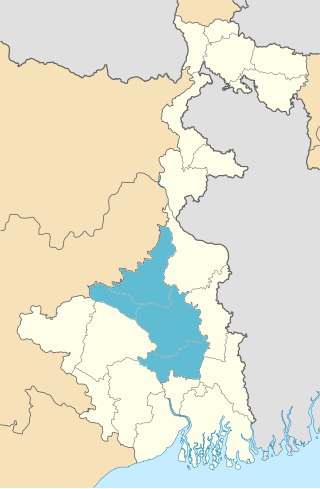
Burdwan Division is one of the 5 administrative division in the Indian state of West Bengal. The headquarters of the Burdwan division is situated at Chinsurah while the largest city in this division is Asansol. This division is known for its huge reserve of coal, mainly in the districts of Paschim Bardhaman and Birbhum.
Egara is a census town in Raniganj CD block in the Asansol Sadar subdivision of the Paschim Bardhaman district in the Indian state of West Bengal.

Coal in India has been mined since 1774, and India is the second largest producer and consumer of coal after China, mining 997 million metric tons in FY 2023-24. Around 20% of coal is imported. Due to demand, supply mismatch and poor quality with high ash content, India imports coking coal to meet the shortage of domestic supply. Dhanbad, the largest coal producing city, has been called the coal capital of India. State-owned Coal India had a monopoly on coal mining between its nationalisation in 1973 and 2018.

Asansol Sadar subdivision is an administrative subdivision of the Paschim Bardhaman district in the state of West Bengal, India.
Eastern Coalfields Limited (ECL) is a coal producer based in India. The company was founded in 1975 after nationalisation of coal mines in India. It operates coal mines in Jharkhand and West Bengal states of India. It inherited all the private sector coal mines of the Raniganj Coalfield. It is one of the fully owned subsidiaries of Coal India Limited. The company has its headquarters at Sanctoria, in West Bengal.
Raniganj Coalfield is primarily located in the Asansol and Durgapur subdivisions of Paschim Bardhaman district of West Bengal. It spreads over to the neighboring districts of Birbhum, Bankura, Purulia and to Dhanbad district of Jharkhand.

Raniganj is a community development block that forms an administrative division in Asansol subdivision of Paschim Bardhaman district in the Indian state of West Bengal.
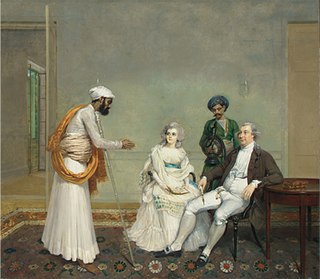
Suetonius Grant Heatly was a judge employed by the British East India Company and, with John Sumner, established what is considered to be the first coal mine in India.

Asansol Junction is a railway station of Eastern Railway in Asansol of Paschim Bardhaman district in the Indian state of West Bengal. The station is on the Howrah–Delhi main line. It is the 8th busiest railway station in India in terms of frequency of trains after Kanpur Central, Vijayawada Junction, Delhi Junction, New Delhi, Ambala Cant, Howrah and Patna Junction. Around 171 trains pass through the station daily. It serves Asansol and the surrounding areas.
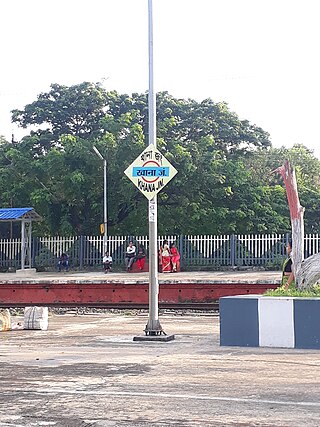
Khana Junction is a railway station in Bardhaman Sadar North subdivision of Purba Bardhaman district in the Indian state of West Bengal.
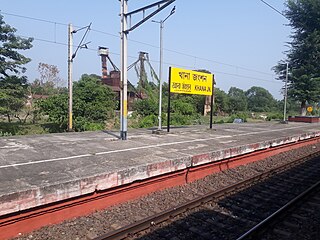
The Barddhaman–Asansol section is a railway line connecting Bardhaman and Asansol. This 106 kilometres (66 mi) track is part of the Howrah–Delhi main line, Howrah–Gaya–Delhi line and Howrah–Allahabad–Mumbai line. It is under the jurisdiction of Eastern Railway, and is connected to the South Eastern Railway through Asansol–Adra line at Asansol Jn and Kalipahari–Damodar connector at Kalipahari.
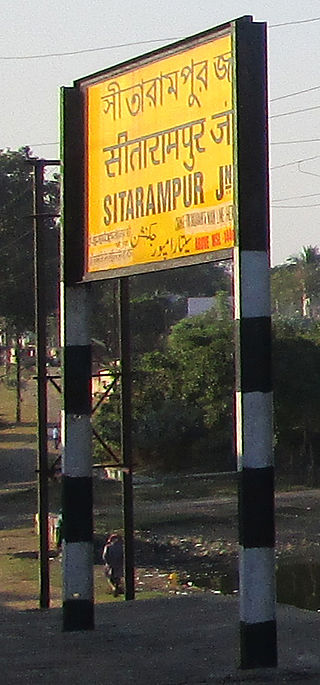
Sitarampur Junction, station code STN, is the railway station serving the neighbourhood of Neamatpur and Sitarampur in Asansol, Paschim Bardhaman district in the Indian state of West Bengal. Sitarampur Junction is part of the Asansol Division of the Eastern Railway zone of the Indian Railways. Sitarampur Junction is connected to metropolitan areas of India, Delhi–Kolkata main line via the Mugalsarai–Patna route as well as the Grand Chord route. It has an average elevation of 99 metres (325 ft).
Charanpur is a village in the Paschim Bardhaman district of West Bengal, India, about 9 kilometres (5.6 mi) from the industrial town of Asansol. The village is notable for being featured in the Indian film Swades.

Paschim Bardhaman district is a predominantly urban mining-industrial district in West Bengal. The headquarter of the district is Asansol. It was formed on 7 April 2017 after bifurcation of the erstwhile Bardhaman district as the 23rd district of West Bengal.
Sripur Area is one of the 14 operational areas of Eastern Coalfields Limited located in Asansol subdivision of Paschim Bardhaman district in the state of West Bengal, India.
Satgram Area is one of the 14 operational areas of Eastern Coalfields Limited located mainly in Asansol subdivision of Paschim Bardhaman district and partly in Bankura Sadar subdivision in Bankura district, both in the state of West Bengal, India.
Sodepur Area is one of the 14 operational areas of Eastern Coalfields Limited located mainly in Asansol subdivision of Paschim Bardhaman district and partly of Raghunathpur subdivision in Purulia district, both in the state of West Bengal, India.
Salanpur Area is one of the 14 operational areas of Eastern Coalfields Limited located in Asansol subdivision of Paschim Bardhaman district, in the state of West Bengal, India.
References
- ↑ Sarkar, Suvobrata. "Bengali Entrepreneurs and Western Technology in the Nineteenth Century: A Social Perspective" (PDF). Indian Journal of History of Science, 48.3 (2013) 447-475. Archived (PDF) from the original on 2 August 2018. Retrieved 2 August 2018.
- 1 2 3 "Dwarakanath Tagore – India's Industrious Pioneer". Live History India. Archived from the original on 2 August 2018. Retrieved 2 August 2018.
- ↑ "Dwarakanath Tagore Lecture presented by Mr. Sumit Mitra". 27 September 2015. The Tagore Centre UK. 27 September 2015. Archived from the original on 2 August 2018. Retrieved 2 August 2018.
- ↑ "Businessman called Tagore". The Telegraph, 30 November 2014. Archived from the original on 2 December 2014. Retrieved 2 August 2018.
- 1 2 3 "Coal Dust in the Tagore Album". Author: Vikram Doctor, Editor, Special Features for The Economic Times. The Economic Times, Blogs, 20 September 2012. 20 September 2012. Archived from the original on 19 September 2015. Retrieved 2 August 2018.
- ↑ "Great Western of Bengal Railway Company". Puronokolkata. 28 October 2015. Archived from the original on 3 August 2018. Retrieved 2 August 2018.
- ↑ R.P. Saxena. "Indian Railway History timeline". IRFCA. Archived from the original on 14 July 2012. Retrieved 10 February 2012.